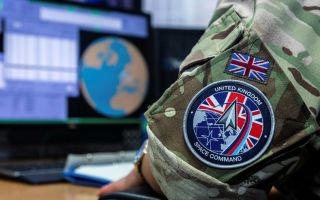Tri-Service
Syria: The British Military Option
The refugee crisis in Europe is increasing calls for the British forces to somehow intervene in Syria.
The argument goes that preventing attacks on civilians will stop people needing to flee in the first place.
Syria’s civil war, though, is massively complex with six main players plus the international coalition flying missions against Islamic State.
On one side there’s the Syrian government backed by Hezbollah and the Russian government. Ranged against them are the Islamic State, the much vaunted moderate Syrian opposition and of course Kurdish fighters too.
Any British bombing campaign aimed at protecting civilians in some way would have to decide which group to attack, how and where. The consequences of miscalculation could be extreme.
More from Forces.tv - Comment: Putin In Syria: The War Just Got Worse
Diplomatically too, solving the refugee crisis is fraught. A UN approved civilian safe haven or even no-fly zone would need Russian blessing to get through the Security Council.
From a purely practical point of view, protecting such a safe haven would take substantial military might, and a will to use it.
The consequences of hoping for the best rather than planning for the worst were seen in events leading to the Srebrenica massacre, in which a UN protected safe haven was over-run with horrific consequences.
Preventing something similar happening in Syria and, crucially for these purposes, convincing the population that a safe haven were indeed safe would take significant manpower.
With the U.S. led coalition already bombing Syria, if a UK campaign were ordered the RAF could react quite quickly.
British planes are already flying over Syria, gathering intelligence on Islamic State.
The Tornados flying bombing raids against Iraq could rapidly be re-tasked to attack positions in Syria too, as could the Reaper drones flying from Kuwait.
However, substantially increasing the numbers of aircraft involved could be far harder. The Tornado force is already stretched but could, we understand, possibly come up with a small number of extra planes and crews.
Equally, we understand that not all of the UK’s Reapers are actively involved in the campaign at present: more could be brought out of storage.
Substantially increasing ground attacks, though, would have to involve Typhoon. The Phase 1 Enhancement programme has seen later Typhoons upgraded to a credible ground attack capability, based around the same Litening Pod and Paveway IV bombs as Tornado.
This is a world away from what they could offer in Libya but still lacking compared to the Tornado: Typhoon cannot yet operate the Brimstone missiles which have characterised Tornado deployments in recent years.
Even so, a relatively limited number of aircraft have been fitted with the technology and the Typhoon fleet is itself already stretched, with large numbers of aircraft needed to sustain Quick Reaction Alert duties defending UK and Falkland Islands airspace.
The problem isn’t just about sheer numbers: it is the fact that this is likely to be at the very least an enduring, if not an expanding, commitment.
So while finding relatively large numbers of aircraft for a brief bombing campaign is one thing, maintaining that capacity to cope with a situation as seemingly intractable as Syria is something else altogether.









